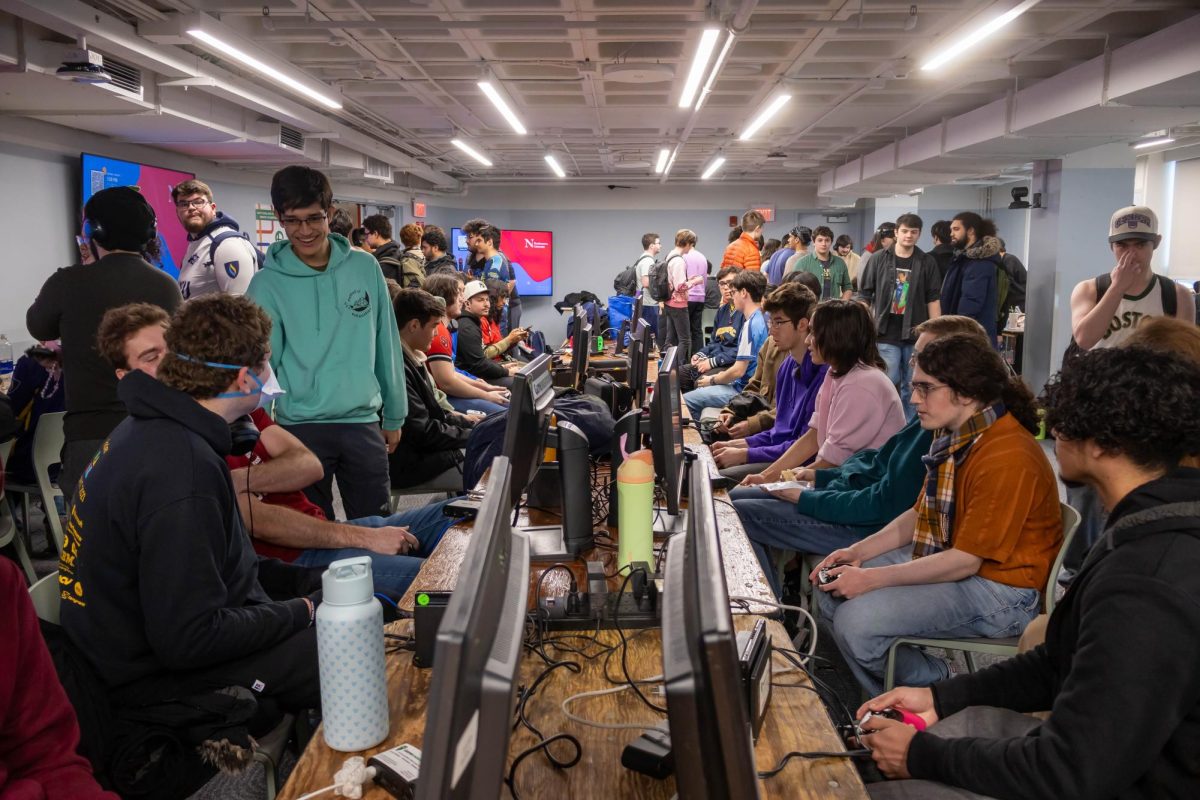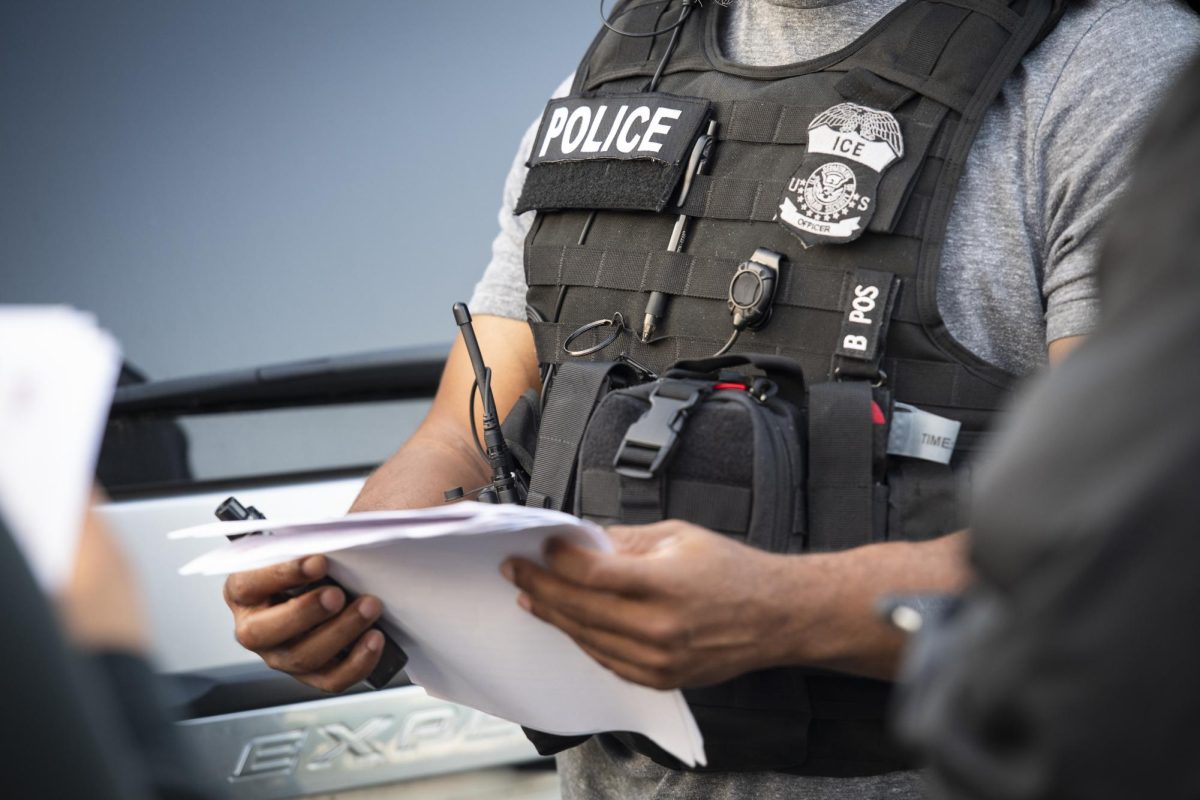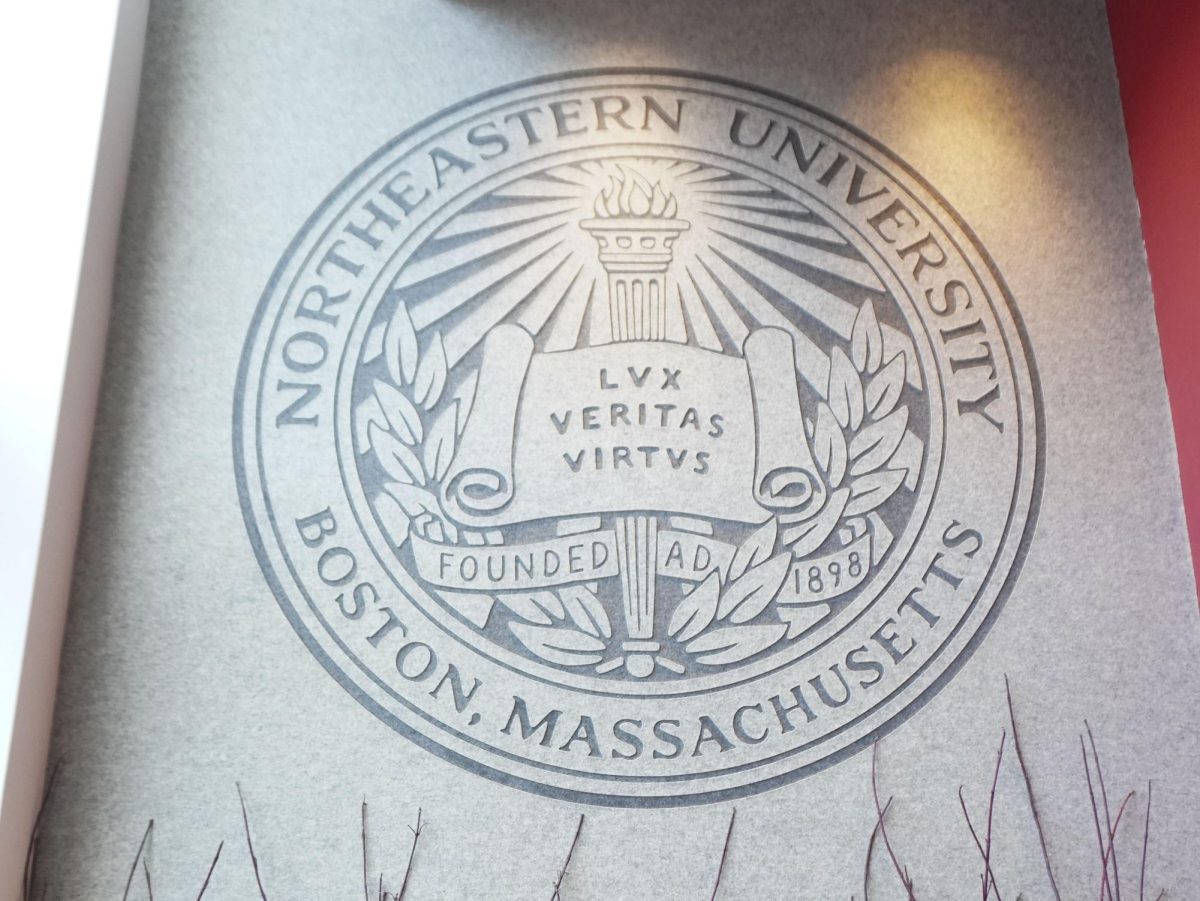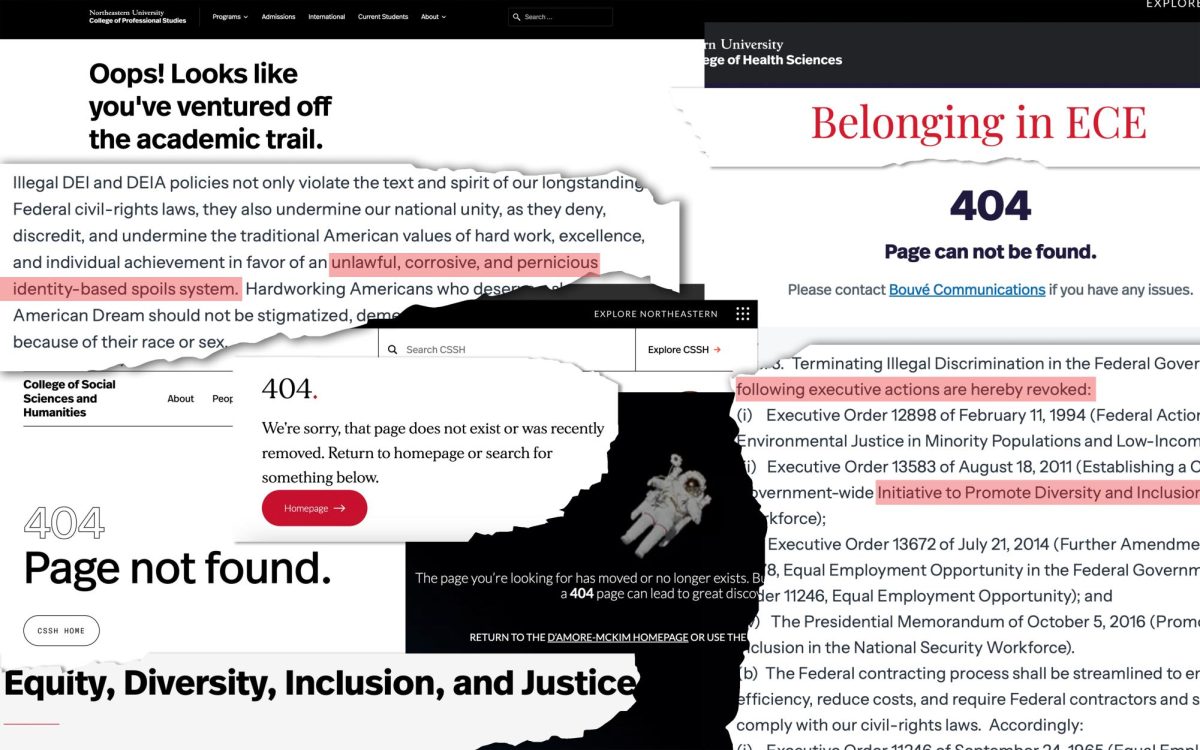Stripes of color dashed across the screen and were replaced by water drops, green fuzz and white circles. The music matched the images: scratchy, digitized and unrecognizable.
The short film, “Time Streams,” was the first work shown at the Visual Music Marathon April 28. The 12-hour festival in the Raytheon Amphitheatre featured works from around the world and drew a crowd of about 250 Northeastern student, faculty and community members.
The event, which was curated by music professor Dennis Miller, was part of the Boston CyberArts Festival, a 16-day event featuring digital artwork in all media.
The films screened on Saturday exemplified “visual music,” a film genre Miller described as an “integration of music and sound in really unique ways.” Similar to the Windows Media Player’s music visualizer, examples of the genre can be seen in the original 1940 Disney film, “Fantasia.”
Half of the films shown at the festival were selected out of a pool of 300 by Miller and Northeastern visual arts professors Ann Steuernagel and Isabel Meirelles. The other 60 works featured were invited by the event’s producers to participate in the festival.
“When you add it all up you have 120 films that cover an 80-year period, plus the live performance – nothing like this has ever been done before, much less in a 24-hour period,” Miller said.
While this is the first time Northeastern has hosted a visual music festival, the film genre is not new to campus.
“This is something that I do, this is something that our students do, and people all around the world,” Miller said. “I thought it would be a great thing to bring to Northeastern.”
Although most were produced in America, the films represented 25 countries including Canada, Japan, Brazil and Germany. The works covered a variety of moods, ranging from the playful “IV.6” and the comedic “I Haven’t Read A Book in At Least Five Years” to the dramatic “Petal Scream” and the Iraq war footage in “I’ve Got A Guy Running.”
“IV.6,” by American film-maker Mike Winkelmann blended percussion-heavy upbeat music with bright animation. Stars circled, feet kicked and balloons and ladybugs dashed across the screen.
Eric Sheets, a sophomore civil engineering major, said he had experienced visual music before at “weird art museums” and he enjoyed “IV.6.”
“The music was pretty cool, the video was the perfect length and it was an interesting tune,” he said.
The tone of “IV.6” contrasted with Jonathon Kirk’s “I’ve Got A Guy Running.” It was a chilling work, featuring a radio voice-over and sniper-vision perspective on an individual’s failed attempts to escape. According to the festival’s program, the film explored “the contention that war is becoming a purely visual phenomenon.”
After about nine hours of film-screening, Cambridge-native Jim Mission, improvised a short live video titled “Blurry Vision.” It featured colorful lines and planes shifting around the screen to pounding club-like beats.
Following his performance, Mission, said that technology has helped the progression of visual music.
“It’s much easier now for people to manipulate music in a home studio,” he said. “It’s at the point where I can control an entire show from my laptop.”
Mission’s work was followed by a live video performance by Brian Knoth, a graduate student at Brown University, who manipulated 3-D planes, frames and shapes as the music maintained a constant hum.
Knoth explained his thought-process while performing the improvised audio-visual piece titled, “Accent Structures #1.”
“The sounds and the colors are thought of in terms of creating waves on energy. I think about the density and effects of the texture, and how the sound and image should play,” he said.
Knoth said visual music exposed him to an innovative way to create art.
“I grew up really loving music. The visual stuff I didn’t think I could ever really do, because I can’t draw,” he said. “But with a computer, you can take music and analyze it as a visual. The visual is inherently music.”
Yui Anzai, a sophomore music and psychology major, said she enjoyed the show because it was relevant to her academic concentrations.
“I’m interested in the music visualization thing,” she said. “And the integration of two senses is interesting to me.”
Miller said it was important for Northeastern to expose visual music to the public.
“If somebody makes a film like this and nobody gets to watch it, then that’s the end of that,” he said. “We’re giving these people a chance to get this work out to the public and then the public can decide.”
Films from the festival are stored in Snell Library for use by the university members, curators, researchers and the public.










